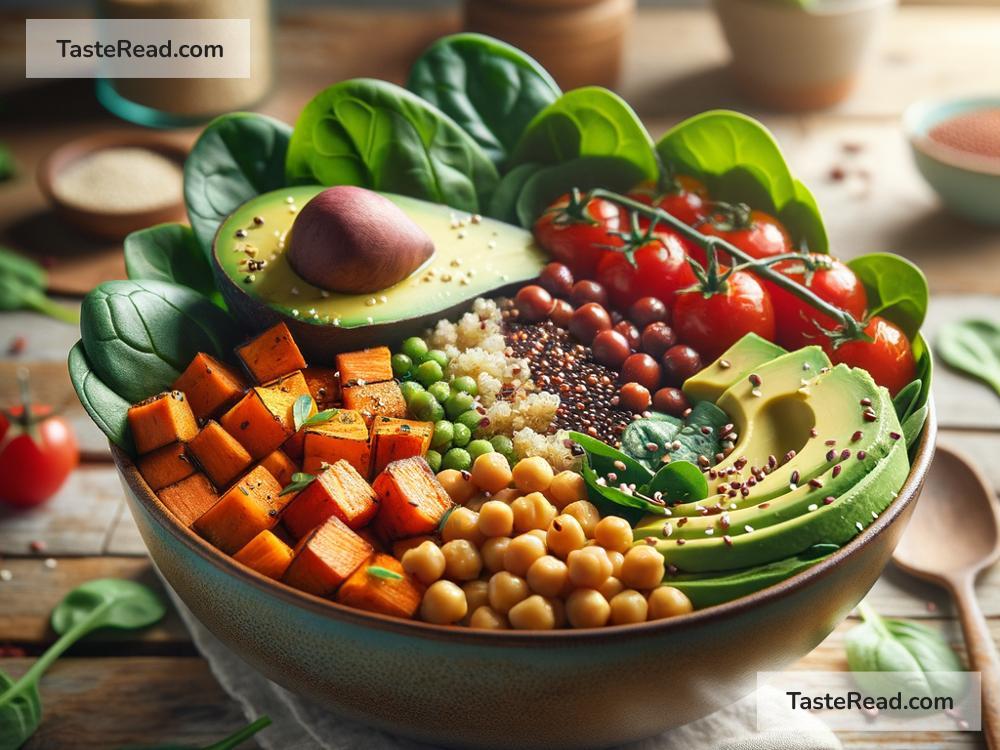How to Create a Nutritious Buddha Bowl: A Simple Guide
If you want a quick, colorful, and healthy meal, a Buddha bowl is the perfect option! Buddha bowls are packed with fresh ingredients, vibrant flavors, and a variety of nutrients. They are easy to customize and can include veggies, proteins, grains, and tasty sauces. Whether you’re looking to eat healthier or just need a simple way to use up leftovers, this guide will teach you how to make a nutritious Buddha bowl at home.
What is a Buddha Bowl?
A Buddha bowl is a one-bowl meal made with a mix of vegetables, grains, proteins, and toppings. It’s named “Buddha bowl” because it’s often rounded and full, resembling Buddha’s belly. These bowls are usually plant-based, but you can add meat or fish if you prefer. The best part? You don’t need a recipe! You can fill your bowl with foods you love, combine textures and flavors, and create a unique dish each time.
Why Are Buddha Bowls Nutritious?
Buddha bowls are packed with nutrients because they include a balance of different food groups. You’ll get vitamins and minerals from the veggies, energy-boosting carbohydrates from grains, and muscle-building protein from beans, tofu, chicken, or other sources. Plus, they’re usually topped with healthy fats like avocado or nuts, and flavored with delicious yet wholesome sauces. By combining these components, you’ll end up with a well-rounded meal that keeps you satisfied.
How to Create a Buddha Bowl: Step by Step
Follow these simple steps to build your own delicious Buddha bowl!
1. Pick a Base
Every Buddha bowl starts with a base. This is usually a grain or leafy green. Some great options are:
- Grains: Brown rice, quinoa, farro, or couscous
- Greens: Spinach, kale, arugula, or romaine lettuce
If you want your bowl to be filling, grains are a good choice. If you’re looking for something light and fresh, go with greens—or use both for extra variety.
2. Add Veggies
Veggies are the heart of a nutritious Buddha bowl, so feel free to pile them high! Aim for a mix of cooked and raw vegetables for a combination of textures. Here are some ideas:
- Raw veggies: Cherry tomatoes, cucumbers, shredded carrots, thinly sliced radishes
- Cooked veggies: Roasted sweet potatoes, steamed broccoli, sautéed zucchini, grilled eggplant
Try to include a rainbow of colors to make your bowl visually appealing and rich in nutrients.
3. Choose a Protein
Protein is essential for keeping you full and energized. Buddha bowls are incredibly flexible, so you can choose plant-based proteins, like beans and tofu, or animal-based proteins, like chicken or eggs. Here are some options:
- Plant-based: Chickpeas, black beans, lentils, grilled tofu, or tempeh
- Animal-based: Grilled chicken, boiled eggs, salmon, or shrimp
If you’re vegan or vegetarian, you’ll easily find plenty of protein options to fit your preferences.
4. Add Healthy Fats
Healthy fats make your Buddha bowl extra satisfying. They’re important for brain health and help your body absorb vitamins from the veggies. Popular choices include:
- Sliced avocado
- Chopped nuts like almonds, cashews, or peanuts
- Seeds like sunflower seeds, chia seeds, or flaxseeds
- Olive oil (used in dressings or drizzled over the bowl)
Adding just a small amount of healthy fats to your bowl will give it a creamy texture and delicious flavor.
5. Top It Off with a Sauce
The sauce is what brings all the ingredients together! A good dressing or sauce adds flavor and makes your bowl exciting. Here are some easy ideas:
- Nutty flavors: Peanut sauce or tahini dressing
- Tangy options: Lemon vinaigrette or balsamic glaze
- Creamy: Greek yogurt dressing or avocado-based sauce
- Spicy: Sriracha, chili lime sauce, or spicy hummus
Store-bought sauces work too, but homemade dressings are fresher and often healthier.
6. Add Crunch and Extras
For the finishing touch, you can sprinkle some extra toppings over your bowl to make it even more fun to eat. Think crunchy or flavorful additions like:
- Toasted seeds (pumpkin or sesame seeds)
- Crushed nuts
- Fresh herbs (parsley, cilantro, or basil)
- Pickled veggies
- A squeeze of lime or lemon juice
These small additions can elevate the taste and texture of your bowl!
Example Buddha Bowl Recipe
To help you get started, here’s a simple example:
- Base: Quinoa
- Veggies: Roasted sweet potatoes, steamed broccoli, and cherry tomatoes
- Protein: Grilled tofu
- Healthy Fats: Sliced avocado
- Sauce: Lemon tahini dressing
- Extras: Toasted pumpkin seeds and fresh parsley
Prepare each ingredient, assemble them in a bowl, and drizzle on the dressing. That’s it—your Buddha bowl is ready to enjoy!
Tips for Making Buddha Bowls
- Prep Ahead: Cook grains and proteins in advance so you can quickly assemble a bowl during busy days.
- Experiment: Don’t be afraid to try new ingredients or mix up flavors.
- Balance: Aim to include at least one ingredient from each category (veggies, protein, grains, fats) for a nutritious meal.
- Presentation: Arrange everything neatly—it makes your meal look beautiful and Instagram-worthy!
Conclusion
Creating a Buddha bowl is simple, fun, and healthy. It’s a versatile meal that fits anyone’s taste and diet preferences. Plus, it’s a great way to enjoy fresh whole foods and experiment with flavors. So why not give it a try? Grab your favorite ingredients, mix and match them, and create a nutritious bowl that’s perfect for breakfast, lunch, or dinner. Once you start making Buddha bowls, you’ll be hooked on their deliciousness!


